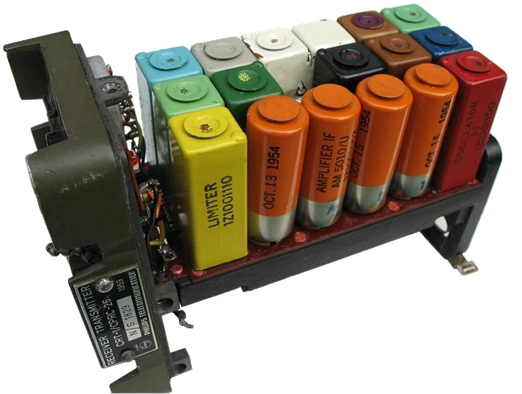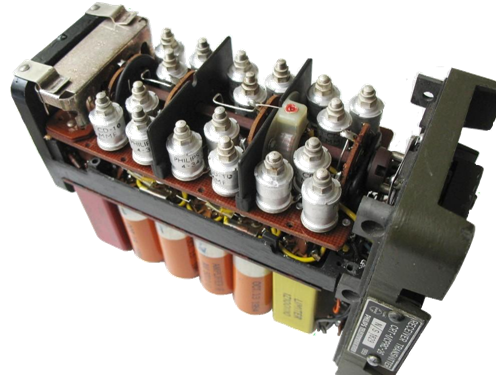

|
1950 |

|
The CPRC-26 is a small battery operated transceiver, for ground-ground or ground-air communication. It operates on 6 crystal controlled channels in the VHF frequency range of 47 to 55.4 MHz. The power output is 300mW with FM (Frequency Modulation) deviation of plus or minus 15kHz. It has a range of about 1 mile (1.6km), is fully sealed and weighs about 10 pounds (5kg). Power was provided by a dry battery providing a useful life of 20 hours. It was designed in Canada and used by many armed services, including the Canadian Army and Navy, the US Army, NATO, and the Australian Army. There were about 4500 built by Philips and Canadian Rogers. Frequency channels and modulation type is compatible with the airborne comm units as the ARC-44, ARC-54 and ARC-131, however no squelch is included at receive, and no 150Hz tone at transmit. Typical crystal sets had 6 channels, spaced by 200 kHz.
The power source is a dry battery type BA-439 or BA289/U (+1,5, -3, +45, +90 V), Size 5.5 x 3.5 x 11 inch , weighs 10 lb with the battery. stylus antenna 135 cm long.
The circuit diagram is shown here. Some modules opened are here. |






|
VINTAGE AVIONICS |
|
CPRC26 Handheld RADIO |
A typical FM squad radio operating in the 47-55 MHz band |
|
Receiver/Transmitter CPRC26 showing its modular construction. The tuning capacitors and channel switch on the bottom of the unit are removed here. |